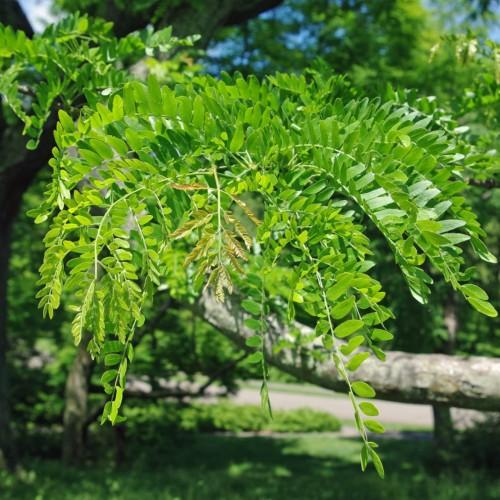
imperial honey locust
Gleditsia triacanthos f. inermis 'Harve' NORTHERN ACCLAIM
Cycle:
Perennial
Watering:
Average
Hardiness Zone:
3 - 8
Flowers:
Flowers In Spring
Sun:
Full sun
Soil:
Well-drained
Fruits:
Fruits In Autumn Ready In Fall
Edible:
Yes
Leaf:
Yes
Growth Rate:
High
Maintenance:
Moderate
Drought Tolerant:
Yes
Salt Tolerant:
Yes
Thorny:
Yes
Care Level:
Medium
watering
Water the Imperial Honey Locust deeply at least once a week during warm months, and occasionally during cooler months. Soak the soil around the tree slowly, ensuring water penetrates down to the root system. During the hot summer months, make sure to increase water frequency as needed – especially if it is dry and hot out. Allow the soil to dry out slightly between waterings so it isn’t constantly wet or soggy.
sunlight
Imperial Honey Locust requires moderate amounts of sunlight, ideally about 5 to 6 hours of direct sunlight each day. It will tolerate partial shade for approximately 2-4 hours a day but will naturally be in full sun during the middle of the day when the sun is at its hottest. This species does best when planted in a location that will receive full afternoon and morning sun, which will provide the right balance of sunlight that it needs for long-term success.
pruning
Imperial honey locust (Gleditsia triacanthos f. inermis 'Harve' NORTHERN ACCLAIM) should be pruned in late winter or early spring before new growth begins. Pruning should be limited to removing dead or diseased branches and any crossing branches that could rub together. Hard pruning is not necessary and can damage the tree, so only light pruning should be used. Pruning should also be used to open up the canopy or create a more pleasing shape.
